This is the kind of thing I absolutely love about HG.net – to see, bit by bit, an illustrated story evolve through the years about some virtually forgotten harp-guitar playing musician.
The story so far:
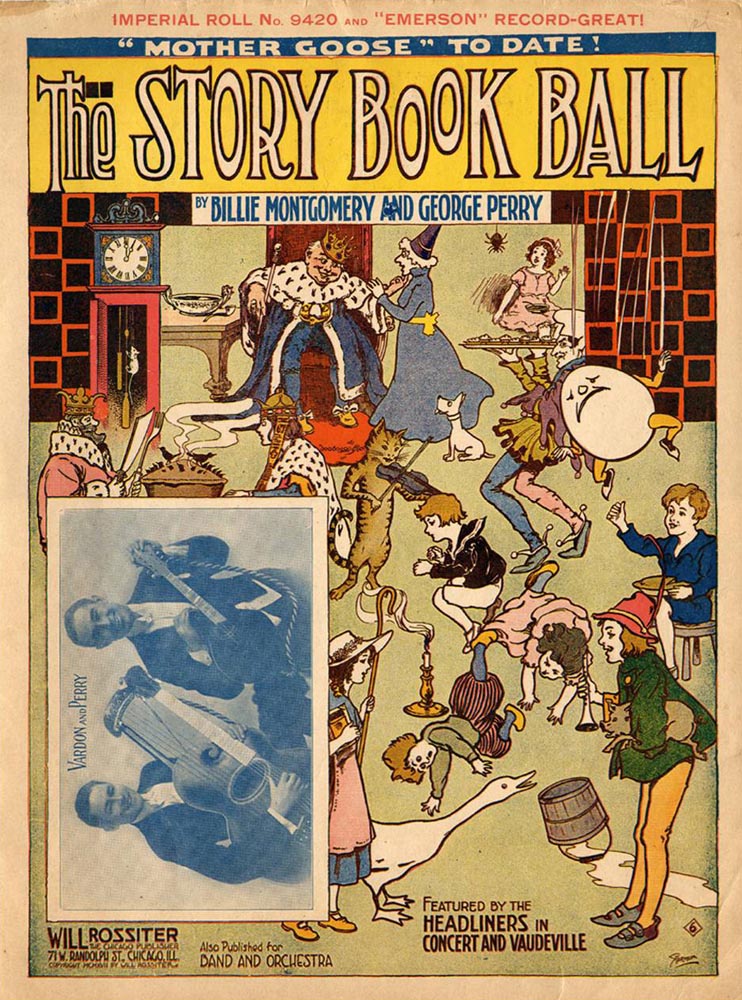
I first received (some years ago) this interesting 1917 sheet music (the full PDF is here) from Stephen Bennett (the owners, Anita Camarella and Davide Facchini, had shared it with him). The performers on the cover are “Vardon and Perry,” whom I had never heard of. I assumed the co-composer “George Perry” was the “Perry” of the performing act, but as it turns out, there is no relation – just a coincidence. In fact, it seems (now that I’ve bothered to look) that the tune was a “song sensation of 1917”). I believe it – this link shows the same sheet music with six other performers (not including V&P), among them the performing composers, Billie Montgomery and George Perry.
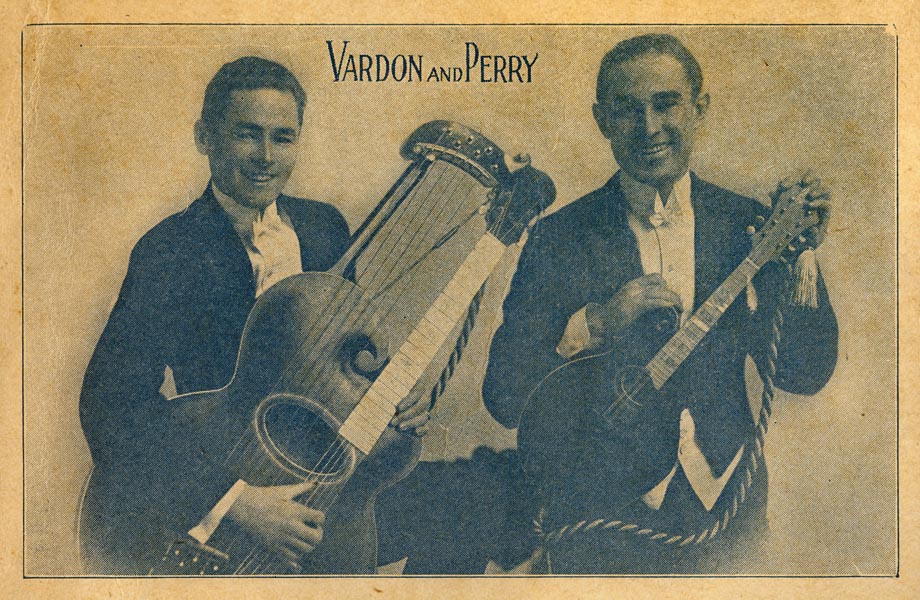
The insert photo shows the duo with the two Gibson instruments they used throughout their career – a c.1908 “3-point” F-style mandolin and a custom Gibson post-1908 harp guitar. Curiously, doesn’t it look like the two Gibsons have custom solid pearl fingerboards? Not just from glare, but a real pearl “pattern”? (more on this below)
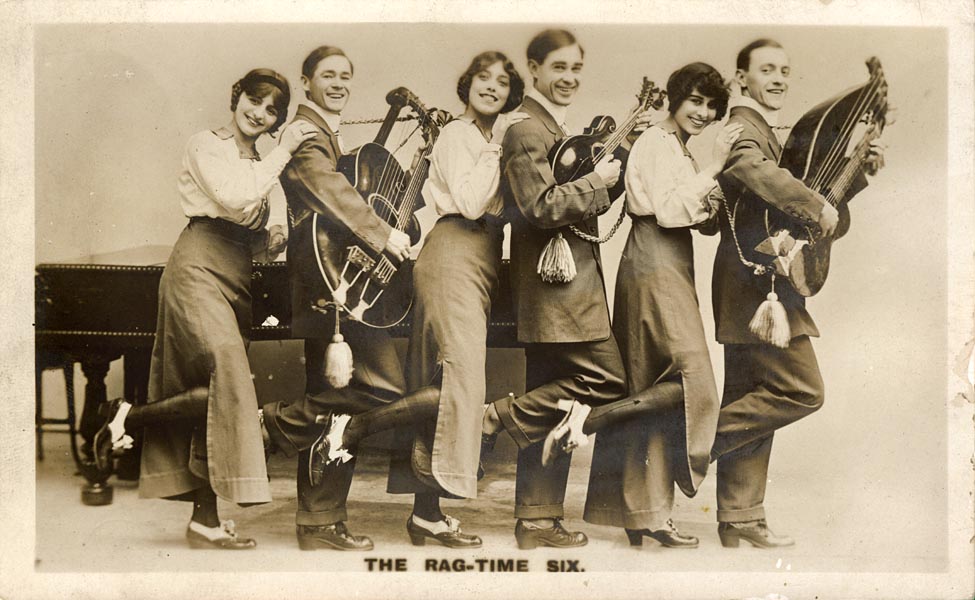
Later, I scored a postcard (undated) of “The Rag-Time Six,” and lo and behold, there were Vardon and Perry again – with their same Gibsons and another guy playing the Knutsen (if I hadn’t recognized the instruments or the faces, the leg kicks still gave them away).
Here we can see the Gibson HG more clearly. It looks like Gibson built Vardon a custom Style U (the 1908 to ‘teens model) with six sub-basses where the ten normally go. Here we again see that the Gibsons have standard fingerboards.
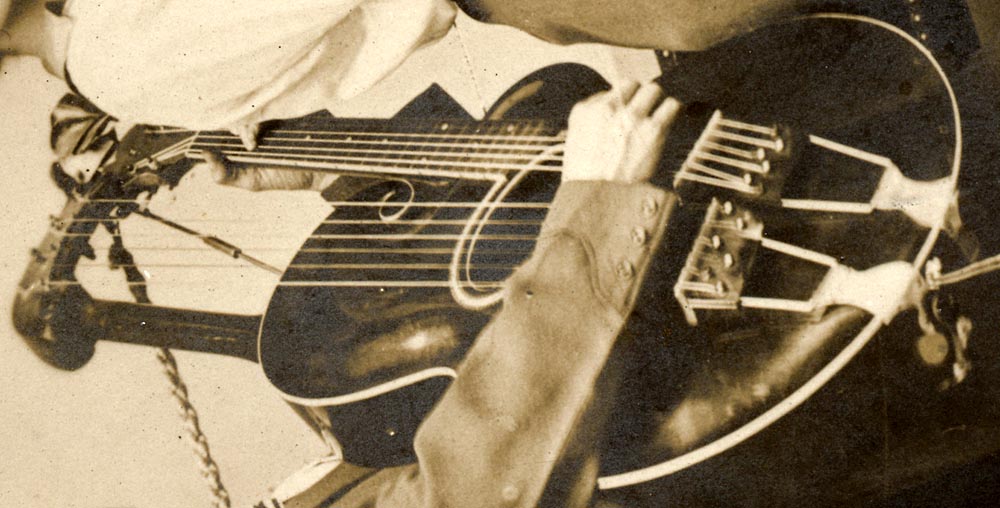
Anyway, that’s the interesting little “photographic essay” I’ve had up on the site for quite a while. Beyond that, I had found reference to another sheet music title by Vardon and Perry. End of story.
Until the other day, when I received my favorite type of email – an out-of-the-blue letter from a woman who Googled and found on the site her great-grandfather; in this case, Harry Perry!
Alluding to the mystery of the Knutsen player (meaning, “Wilber” and the “Rag-Time Six” member), Kirsten Spanjer writes: “I just want to say I was thrilled when I came across this site, though I have to admit it was because I found my Great Grandfather on it. I noticed one of your comments and just wanted to fill in a “Fun Fact” about it, though it doesn’t have to do with the actual instrument. Perry (Harry Perry, the one in the middle) is my Great-Grandfather and I came across this while trying to find a little more background about him. Under the 3rd photo you have “This postcard shows The Rag-time Six, featuring Vardon and Perry, with their same Gibson instruments, but a new player with the same Knutsen.” I know from my grandmother (Harry Perry’s daughter) that “Wilber” was actually a fictional character and Vardon and Perry would actually find a “Wilber” in whatever city they happen to be playing in. This is why you see a different person for this character in the advertisements. I find this to be fascinating because the Knutsen looks like a very unique instrument so I don’t know how easy it would have been to find someone to play with them! Just wanted to let you know that fun fact and thank you for giving me a few more photos of my great grandfather. – Kirsten”
So is that a hilariously cool and obscure bit of harp guitar trivia, or what? (Thanks, Kirsten!)
But wait – there’s more!
I thought it would be fun to try and find one of these classified ads – surely, some city’s searchable archives will eventually yield one. I leave that to a volunteer. Meanwhile, my search unveiled some other cool new finds.
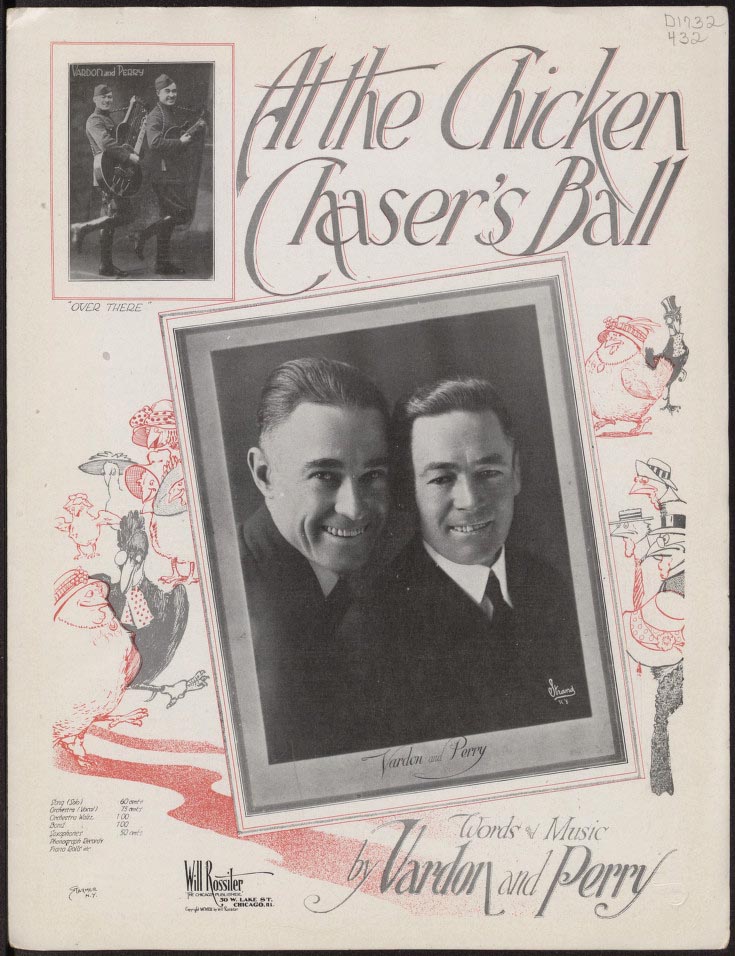
First – an image of their other sheet music (from a great digital collection at Baylor University). This song was written by the team. Here’s a PDF of the music and lyrics (Andy Wahlberg, why don’t you learn it?) – a simple and silly, but still clever, little play-on-words ditty (“Chickens” are of course what we now still call “chicks” – and of course the inspiration for, and pronunciation of, Chico Marx’s name).
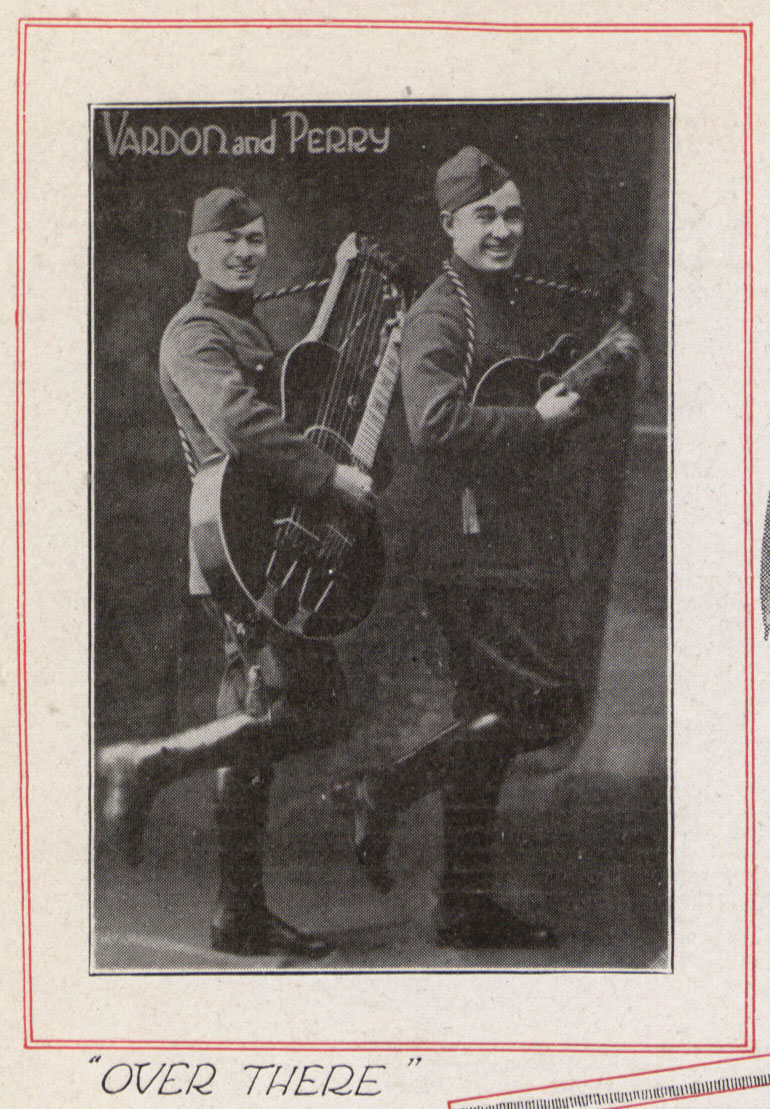
The boys are in army uniform, playing their Gibsons, with the famous leg-up pose that must have been a signature part of their act. Note the appearance of the fretboards – solid mother of pearl again, don’t you think?
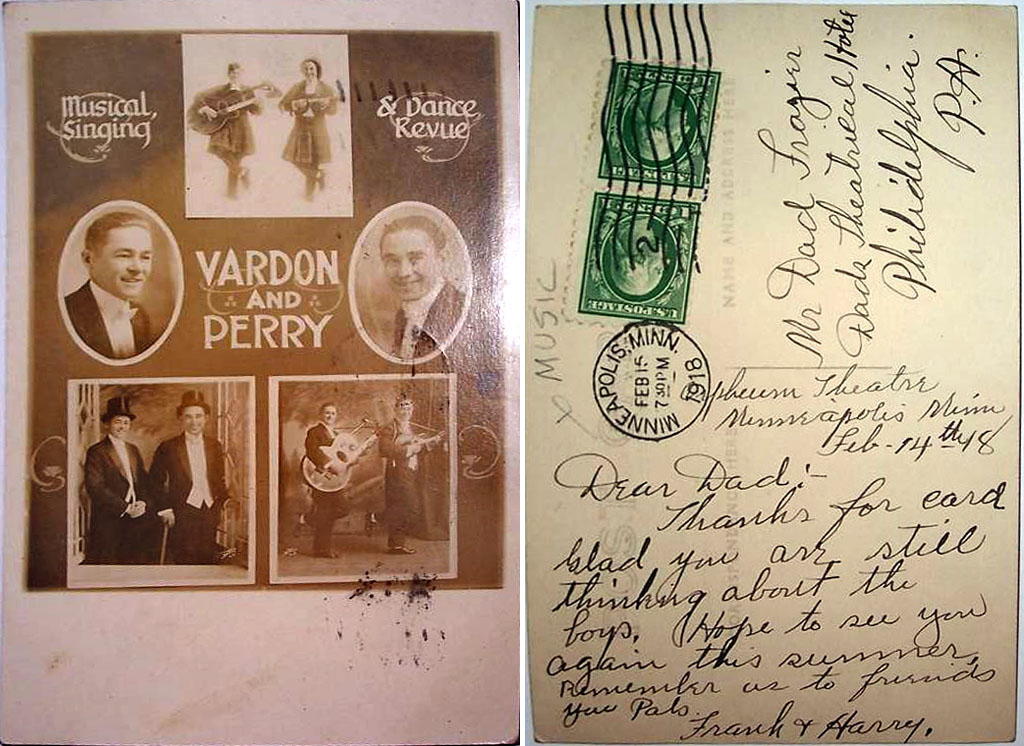
The next find was a recent eBay sale (just a month ago…sorry I missed this one – it went for $4.25!) – a postcard of the team with all new images (again, with Gibsons, and legs up). My guess is that the sellers had no clue (or interest) in the inscription on the back (postmarked Feb 15, 1918)…someone writing to their “Dad, ” signed, “Frank & Harry.” Wait a minute! Thanks to Kirsten’s email, and my new V&P radar, I of course realized that this was written (and sent from the Minneapolis Orpheum Theatre) by the boys, themselves! But surely they didn’t have the same dad, so who is “Dad Frazier”?
Don’t you just love Google? He’s David Frazier, owner of “Dad’s Theatrical Hotel” in Philadelphia – surely a frequent stop of the duo (and possibly the town’s resident “Wilber”).
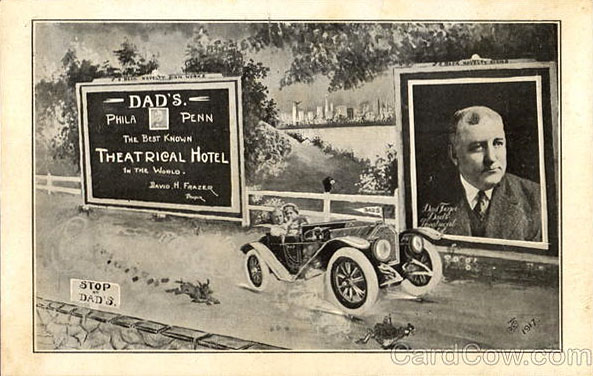
Finally (thanks to the ongoing Google Books Library Project), I found a book written in 1921 by James William Evans called Entertaining the American Army: the American stage and lyceum in the world war. This included a short blurb on “enduring” entertainers Vardon & Perry, who played for our troops in France for 175 nearly-straight days during 1918-1919. The “two instruments slung over their backs, a little guitar and a big bull guitar” could only have been their trademark Gibsons (which the “Over There” insert image in the 1921 Chicken Chasers sheet music above confirms).
The New York Evening Telegram also mentions the duo “recognized by many ex-servicemen as ‘The Live Wire Unit’ of the A.E.F.” under “New Faces Appear in Shubert Vaudeville” on November 1, 1921.
Kirsten just now sent me another image with review (dated!) of The Ragtime Six (warning: contains one brief politically incorrect historical term). This 1913 news release (showing fairly young men) and the above clues provide a better picture of the timeline, i.e.: perhaps The Ragtime 6 > Vardon, Perry & Wilber > Vardon & Perry. With this in mind, I’m now thinking that the guys may have taken their Gibsons back to the factory to have the worn fretboards replaced with solid pearl fretboards, as they seem to appear in the 1917 and 1921 sheet music photos (and look closely at their 1918 postcard – don’t those fretboards look awfully shiny and white?). Someone somewhere must have one or the other of these distinctive instruments!
So that’s the updated Vardon and Perry story so far (but Kirsten’s going to look through more of grandmother’s boxes over Christmas). Vaudeville veterans, astute businessmen (“Hey, let’s just rent a Wilber as needed!”), and hard-boiled troop entertainers – all done with one (or two) harp guitars. Typical of just the kind of player these instruments attract, don’t you think?

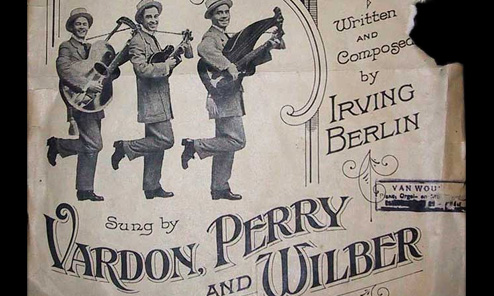
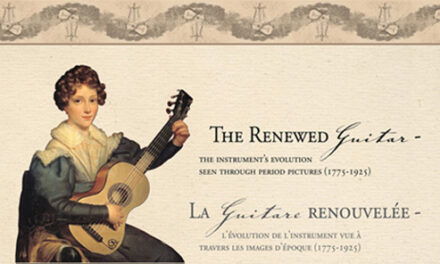
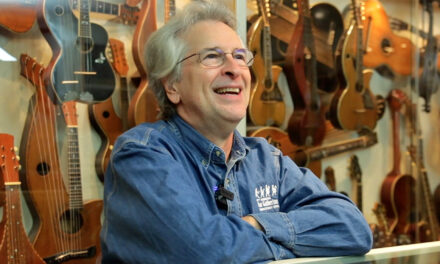
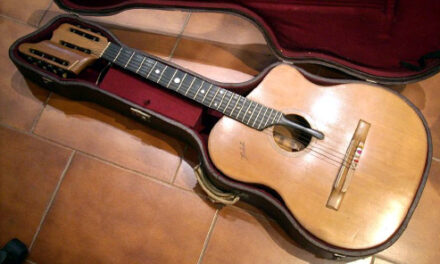
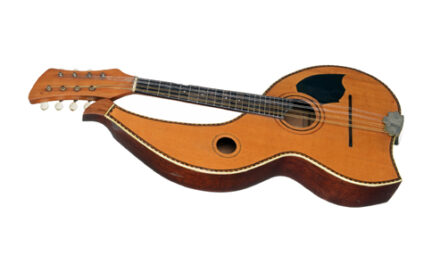
Hello!! I came across your site after trying to research a woman in some vaudeville postcards that I inherited from my grandmom. The cards are from my Great aunt who was in Vaudeville. The woman on the far left in your “Ragtime six” image is a miss Vera Crackles. She was from England and was part of Joseph Hart’s Rain dears and Bathing girls companies from 1908-1909. (The company my Aunt worked for as a dress designer). Vera married Frank Vardon, and later on in the late 20’s they toured as Frank & Vera Vardon. ~Mary
Alan…interesting to read your info on Joe Wilbur. He also was involved with a Hawaiian musician named Joe Puni and they played in a Hawaiian band at the Savoy Hotel and London music halls around 1919. Wilbur also made some Hawaiian records for the UK Imperial label in 1923
Just found this. Great story. I’m surprised there are no pics of him with a six string Style R. Seems like it would have been right up his alley.
Alan – thanks for adding to the story!
Joe Wilbur was a real singer and banjoist, on most of the Savoy Quartet discs issued in the U.K. 1915-1920, though he was American. It isn’t always him with the Vardon and Perry duo, though it sometimes is. In the Ragtime Six photo, the girl behind the leading guy is Jenny Golder, real name Rosie Sloman, whose niece I knew well. Poor Jenny killed herself in Paris in 1928. Her niece left me a lovely pastel of her, which is on my wall. I wrote a monograph about Jenny in 2000. The guy she is leaning on is not Joe Wilbur, but it MAY be Jenny’s own husband Joe Bowden, who was also her partner in an English Music-Hall act, Jenny and Joe. She was born in Australia, but her family came to the U.K. when she was a little girl. She split from her husband and had a brief but successful career in Paris in the 1920’s. Just for info!!
Vardon and Perry played LA at the Pantages in 1921-24, just a short trolley ride away from Knutsen’s Echo Park shop. Not sure whether Chris was the Vaudeville type (or if V&P would’ve hung out with McPherson’s entertainment crowd). But Chris would’ve made a good Wilber!
Thank you again for this article and new photos of my great-grandfather I have not even seen yet. Even though we both love this story for two very different reasons, its a great story nonetheless. Thank you for keeping his name and group alive.
Way cool stuff Gregg!
To All harp guitar people- keep a look-out for a Dyer catalog, pre 1939!!!
See you in Nov.
Thanks for the new photos and info on the old Gibsons. And thanks to Kirsten Spanjer for contributing to the ever growing harp guitar information base! See you at the International Harp Guitar Gathering in November!